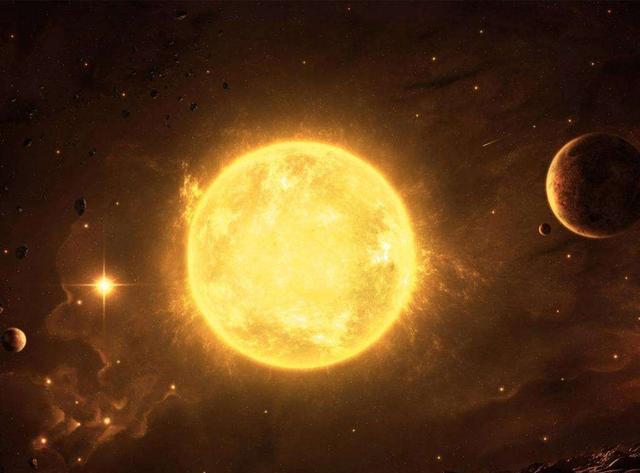Stars are luminous bodies that are almost innumerable in the universe, such as the stars seen in the night sky, except for a few planets that are solar system, the rest are similar to our sun. It can be said that stars are the main force in the universe, with hundreds of billions of them in a tiny galaxy alone, and their size and mass are also different

Now, astronomers continue to study stars, they know that although they are only a celestial body, they actually have a lifespan, and the length of life depends on the mass. For example, our sun is a medium-mass yellow dwarf, and its life span can reach about 10 billion years, while a blue supergiant may have a lifespan of only a million years, so what makes their life span so large
So what makes their lifespans so different?
Speaking of which, many people may ask, since the greater the mass of the star means that the more fuel, the longer its life should be, why is it shorter?
And to understand the answer. We first need to know the mechanism behind the glow of stars.
In general, the reason why stars are able to emit light and heat constantly is because the thermonuclear reactions inside are at work. Since stars are mainly composed of hydrogen, helium and other elements, under the huge mass and super gravity, the hydrogen element of the star will be continuously compressed in the core region, and then "ravaged" by high temperature and high pressure, resulting in nuclear fusion reactions and release energy.
The intensity of this nuclear fusion reaction is proportional to the mass of the star, that is, the greater the mass of the star, the stronger the gravitational pull, which leads to extremely high temperatures and pressures in the core, and the stronger the internal fusion reaction. The consequence of this intense fusion reaction is that the finite amount of hydrogen is consumed rapidly, resulting in a rapid reduction in the fuel of massive stars, and the final lifespan is only a few tens of millions or even millions of years
In fact, compared to massive stars, our sun such a moderate mass star has a much longer lifespan, because the internal nuclear fusion reaction is relatively mild, so it can have a lifespan of about 10 billion years, although the sun has been born for 5 billion years, but it is a prime age
However, the sun is also far from the longest-lived star in the universe, and red dwarfs with smaller masses than the sun are the longest-lived in the universe, their masses are generally below 0.8 times the mass of the sun, and the nuclear reaction is weaker than the sun, such as the nearest star to the earth, Proxima Centauri, which can last the internal nuclear fusion reaction for hundreds of billions of years
It has been 13.8 billion years since the birth of our universe, and most of the earliest first generation of stars have been extinguished or supernova explosions have perished, but the red dwarfs in the first generation of stars have been burning until now, and they can not be said to live long.
So it also tells us that sometimes it is not a good thing that the nuclear fusion of stars is too intense, and that mild fusion reactions can last longer